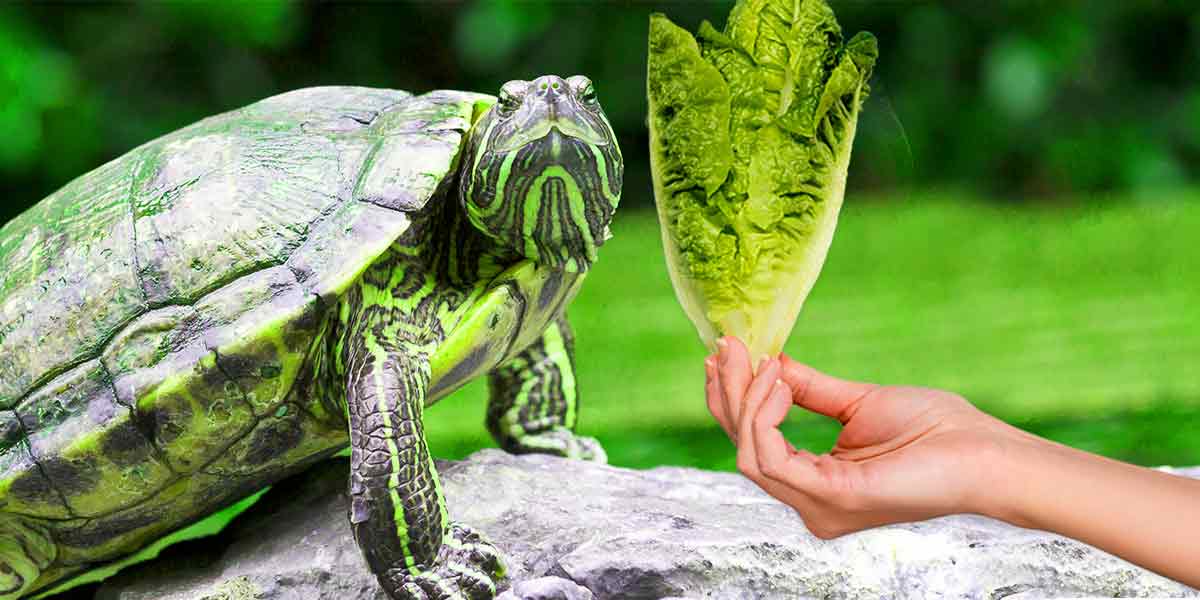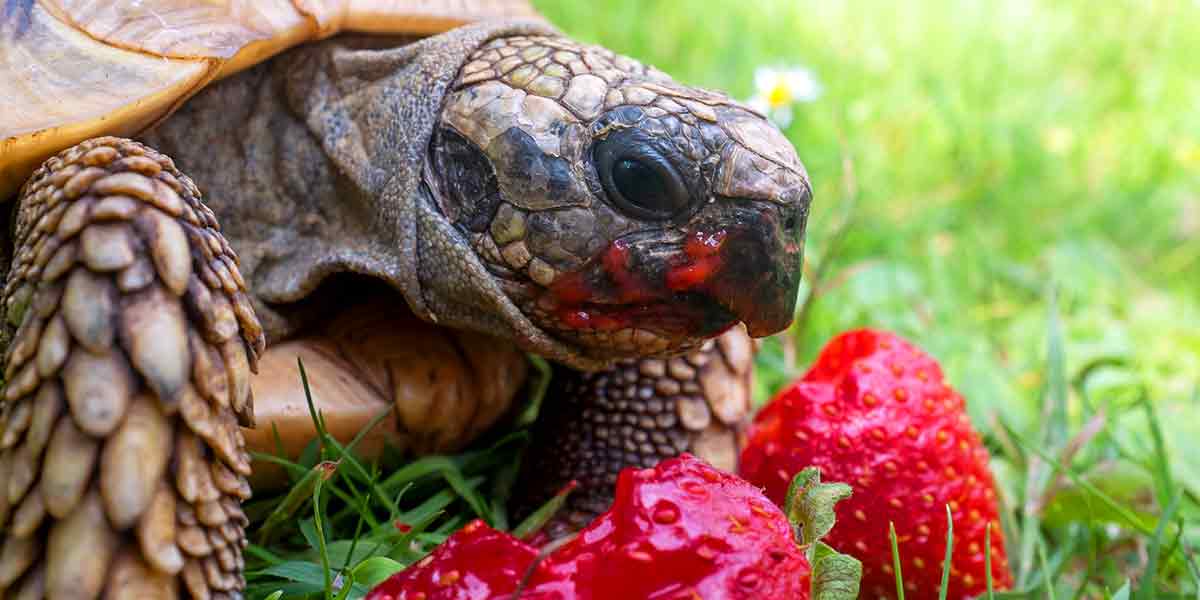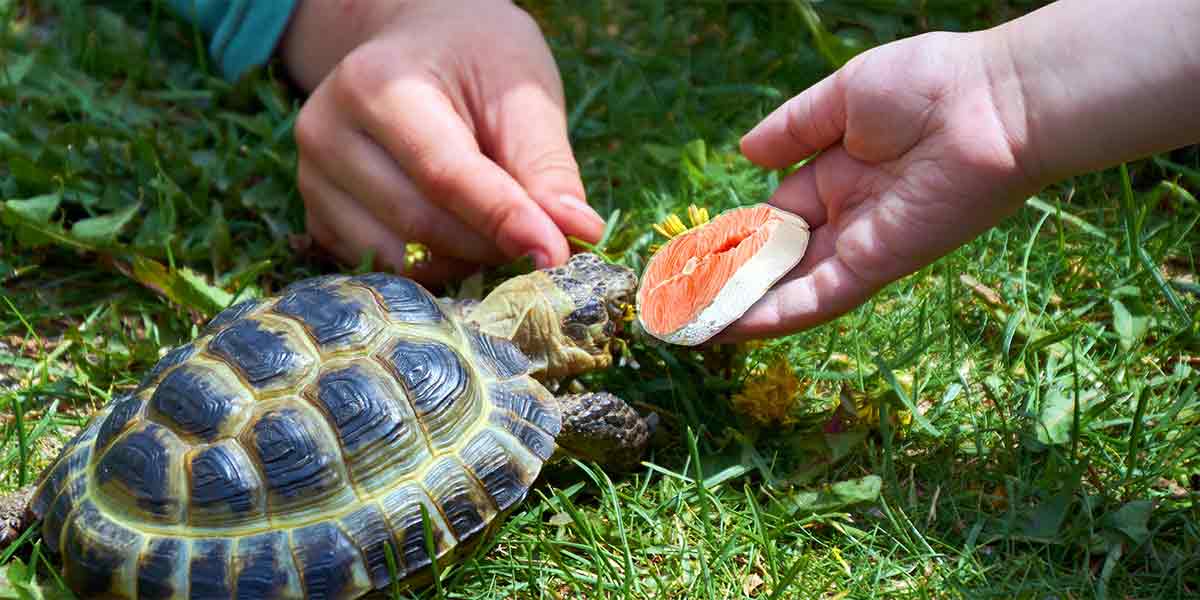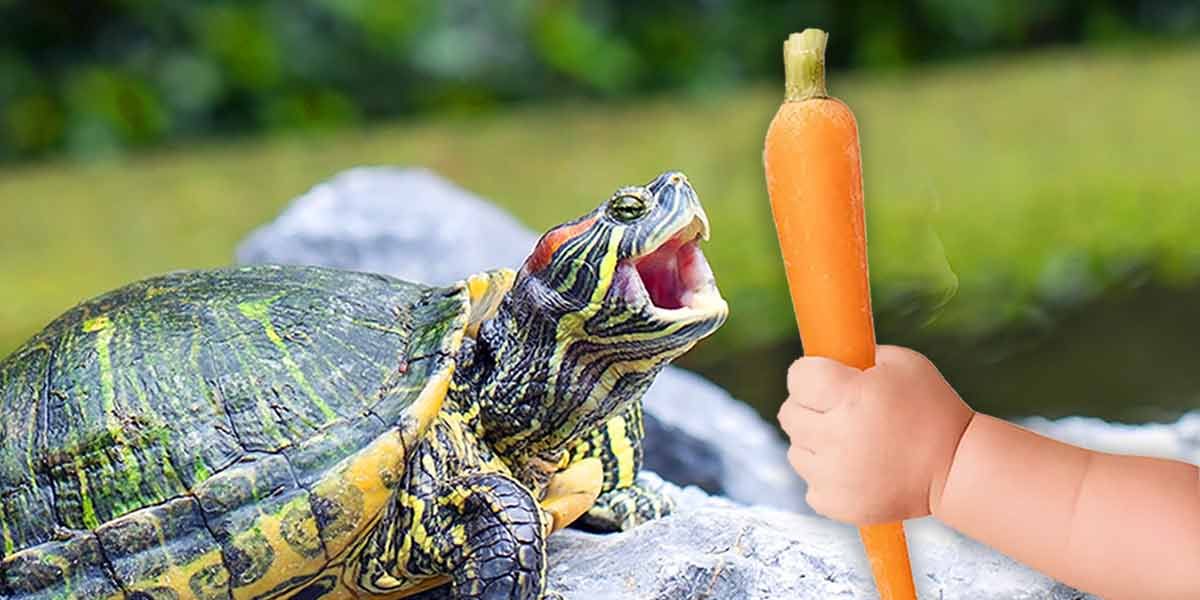Can I feed my turtle lettuce? We will discuss the pros and cons of feeding turtles lettuce and offer some tips on adding this leafy green to their diets.
As an affiliate, we earn from qualifying purchases. We get commissions for purchases made through links in this website’s posts from Amazon and other third parties.
Keep reading this article to learn more!
Can I feed my turtle lettuce? Understand the nutritional needs of your turtle before you begin to feed them lettuce
There are a variety of vegetables that you can give to your turtle, such as lettuce or kale, but these aren’t the only vegetables that are safe for your pet to eat. Most turtles won’t eat the vegetables, but they will enjoy the crunchy texture and smell.
If you want your pet to eat the vegetables, try soaking them in water for at least five minutes. Then, you can add them to the vegetables that you offer your pet.
You can also offer your pet a varied diet by giving him canned food. You can also feed your pet special turtle pellets, which are made from a mix of vegetables, fruits, grains, and other ingredients.
There are also a variety of minerals, vitamins, and supplements that you can offer your pet.
Discover which types of lettuce are better for your turtle
Feeding your turtle the right type of lettuce is a must for a balanced diet.
Different lettuce varieties are better for turtles than others, so it is important to learn which types of lettuce are best for your pet.
Romaine and red leaf lettuce are the best types of lettuce for turtles
Romaine and red leaf lettuce are considered the best types of lettuce for turtles. Both of these lettuces contain high levels of calcium, which is beneficial for the growth and development of the turtle’s shell. Red leaf lettuce also contains vitamin A and carotenoids, which are important nutrients for turtles. On the other hand, iceberg lettuce should be avoided as it is low in nutrition and some turtles may even reject it.
Kale and collard greens are also suitable for turtles
Other lettuce varieties, such as kale, and collard greens, are also suitable for turtles. These types of lettuce are more nutrient-dense and contain vitamins and minerals which are essential for your turtle’s health. They also contain fiber which can help with digestion. When feeding your turtle lettuce, it is best to choose varieties that have a darker green color, as they are more nutrient-dense than lighter greens.
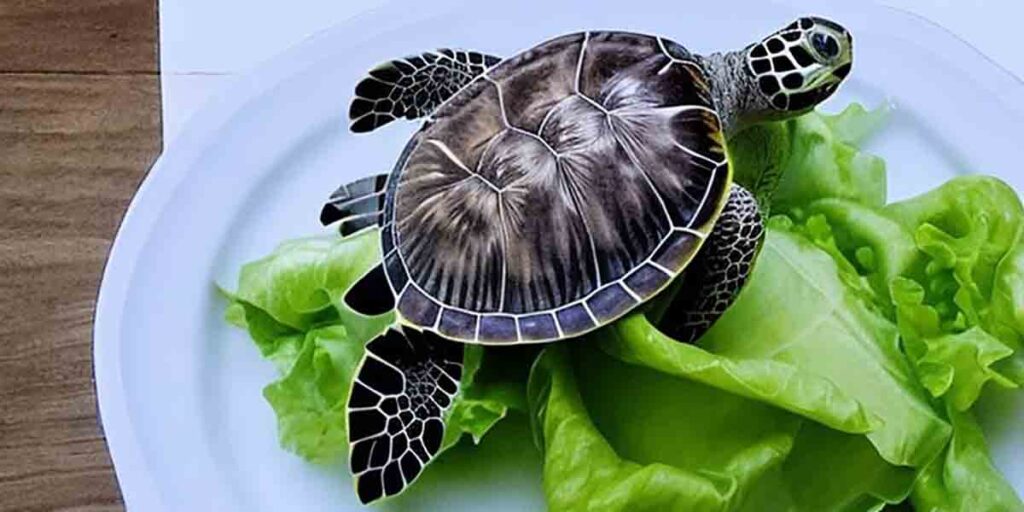
How to prepare lettuce to feed your turtle
When feeding lettuce to your turtle, it is important to make sure that it is washed thoroughly before serving it, and it should be cut into small bite-size pieces.
This will help the turtle consume all of the lettuce. After separating the lettuce, you should rinse the lettuce in ice-cold water for a minute or two. This will help to remove any dirt or impurities on the lettuce.
When washing lettuce, don’t rinse it for too long. Waterlogged lettuce can become soft and moldy – and excessive moisture could even lead to digestive issues for your turtle.
If you are worried about the turtle not eating the lettuce, you should soak the lettuce in a mild salt water solution. This should help to make the lettuce more appetizing. After you have soaked the lettuce, you should drain the water and discard it.
If you choose to feed your turtle Romaine lettuce, it should be served fresh and in moderation, as too much can lead to health problems.
Red leaf lettuce, however, can be fed in larger quantities as it is more nutritionally dense. If you are wondering whether other types of lettuce are suitable for your turtle, it’s always a good idea to consult your veterinarian.
In conclusion, Romaine and red leaf lettuce are the best types of lettuce for turtles, as they contain essential nutrients. Iceberg lettuce should be avoided, as it is not nutritionally dense.
Before serving lettuce to your turtle, it is important to make sure it is washed and cut into small bite-size pieces. If you have any questions about the types of lettuce suitable for your turtle, it’s best to consult your veterinarian.
How much food does a turtle consume?
Did you know that turtles are herbivores? This means that in the wild, they eat only plants, including algae and other plant materials. In the wild, their meals consist of aquatic plants, fruits, and algae.
In the wild, turtles graze on plants and other plant materials. A sea turtle may spend up to 25% of its time foraging for food. In the wild, a sea turtle may spend up to 25% of its time foraging for food. Some turtles can consume up to 10% of their body weight per day.
In the wild, most turtles consume about 10% of their body weight per day.
Turtles by nature rely on their food plant to fatten up before mating and laying eggs. This means that in the wild, most aquatic turtles only eat vegetation from the warmer months, when grasses, seaweed, and other plant materials are available.
In the wild, most aquatic turtles only eat vegetation from the warmer months, when grasses, seaweed, and other plant materials are available. In the wild, turtles only eat aquatic vegetation. This means that in the wild, most aquatic turtles do not eat land-based vegetation.
Learn the best time of day to feed your turtle lettuce
Feeding your turtle lettuce is an important part of a healthy diet. To get the most out of the lettuce, it is important to know the best time of day to feed it to your turtle. Turtles are naturally diurnal animals, meaning they are most active during the day and rest at night.
Therefore, the best time to feed your turtle lettuce is during the day. The optimal time of day to feed your turtle lettuce is mid-morning, shortly after they have finished their morning activity. This allows them to have the opportunity to digest the lettuce and process it for energy.
When selecting lettuce for your turtle, it is important to choose a variety that is low in oxalates, such as romaine lettuce. Oxalates can cause problems for turtles, such as bladder stones if consumed in large amounts.
Furthermore, lettuce should be washed thoroughly before feeding to prevent any harmful bacteria from growing on it. It is also important to only feed the turtle small amounts of lettuce at a time, as too much lettuce can cause digestive problems.
Finally, it is important to monitor your turtle closely to ensure that they are eating and digesting the lettuce properly. If you notice any changes in your turtle’s behavior, it is important to seek veterinary advice immediately. With the right care and attention, feeding your turtle lettuce can be a great way to supplement their diet and keep them healthy.
Watch the next video to see how easily turtle eats lettuce:
Discover the safest ways to feed your turtle lettuce
Lettuce is a tasty addition to many diets that humans enjoy. However, lettuce can be harmful to turtles when consumed in sufficient amounts.
Lettuce is rich in nutrients, and it’s a great way to introduce new foods to your turtle’s diet. However, it’s important to monitor the amount of lettuce you feed your turtle.
Can my turtle eat any type of lettuce?
Most lettuce is fine for turtles to eat, but certain types, including iceberg lettuce, can cause problems. Iceberg lettuce is the type of lettuce that you’ll find in most grocery stores and on your kitchen table. It’s mostly water – which is why it’s sometimes called “iceberg lettuce” – and it’s also low in fiber.
Iceberg lettuce is high in fat and sodium and also contains high levels of nitrate. When your turtle eats too much of it, it can throw off his or her body balance and make your turtle sick.
Iceberg lettuce has very little in terms of nutritional value and contains substances that can be toxic to turtles. Iceberg lettuce contains an enzyme called lactucarium which can be harmful to turtles, as it can cause digestive issues, lethargy, and poor appetite. Additionally, iceberg lettuce has a high water content which can cause further problems with digestion.
Iceberg lettuce is particularly harmful to turtles because it leads also to water intoxication. When your turtle consumes iceberg lettuce, he absorbs large amounts of water and this leads to water intoxication. This is a condition characterized by fatigue, dehydration, and lethargy. If your turtle is consuming iceberg lettuce in large amounts, he may not exhibit symptoms of water intoxication right away, but the condition can still develop over time.
Do not feed regularly lettuce to a turtle
Turtles are omnivores, so they will eat both insects and plants. You should feed your turtle lettuce, but be aware that the majority of their diet should be made up of plants rather than lettuce.
Many types of lettuce are suitable for feeding turtles, including Romaine, Red Leaf, and Iceberg lettuce. These lettuces are readily available from your local supermarket, or you can also grow your lettuce in your garden. Do not pick lettuce that has grown near roadsides, as this type of lettuce will have a higher incidence of harmful pesticides.
What to avoid when feeding lettuce to your turtle:
While feeding your turtle lettuce may not be your first choice, it can still be a good choice for general nutrition. However, there are some caveats to feeding your turtle lettuce:
1. Avoid feeding lettuce to your turtle regularly.
While romaine lettuce is a good source of nutrition, it doesn’t provide your turtle with a complete diet. Therefore, feeding your turtle lettuce regularly may stress out his system.
2. Avoid feeding your turtle other leafy greens such as cabbage, spinach, or kale.
Lettuce provides the nutrition your turtle needs, but should not be the only source of greenery. Avoid feeding it other leafy greens, as several of these greens are toxic to turtles.
3. Avoid feeding your turtle any leaves from the nightshade family.
This group of greens includes peppers, tomatoes, potatoes, eggplant, and nightshade flowers. All of these foods can harm your turtle.
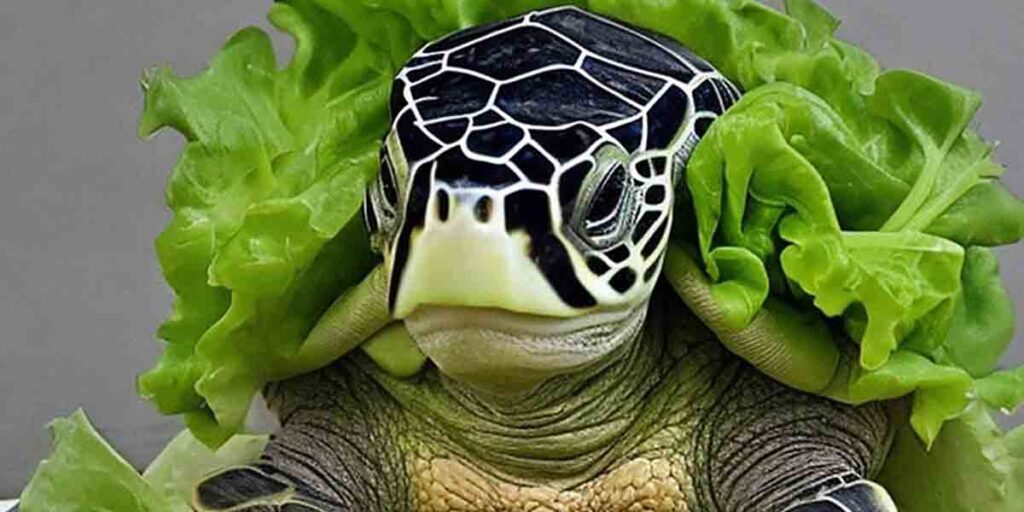
Benefits of feeding lettuce to your turtle – higher nutrition, vitamin intake, and more!
Feeding lettuce to your turtle is a great way to provide your pet with higher nutrition and more vitamins than they would typically get from their regular diet.
Not only is lettuce a great source of vitamins and minerals, but it is also a low-calorie food that is easy for your turtle to digest. Lettuce is also a great source of hydration for your pet, as it contains a high water content. This hydration helps to keep your turtle healthy and active.
There are several benefits to feeding lettuce to your turtle. One of the biggest benefits is the nutritional value it provides. Lettuce is rich in vitamins A, C, and K, as well as essential minerals such as magnesium, calcium, and iron. These nutrients are essential for a healthy turtle. Lettuce also contains a good amount of fiber which helps with digestion and keeping your pet regular.
Additionally, lettuce is a great source of vitamin E. Vitamin E is an important antioxidant that helps protect your turtle’s cells from damage. It also plays an important role in the development and maintenance of healthy skin and eyes. Vitamin E can also help reduce inflammation and is important for a healthy immune system.
Feeding lettuce to your turtle is an excellent way to improve their nutrition, hydration, and overall health. This leafy green veggie is packed with essential vitamins and minerals, making it the perfect addition to your pet’s diet. Not only will it provide them with the essential nutrients they need, but it will also help keep them hydrated, regular, and active. With all the benefits lettuce provides it’s no wonder it’s a great food for your pet turtle.
What’s inside lettuce and how it helps your turtle?
- Calcium: The calcium in lettuce is beneficial for your turtle’s bones. It strengthens the bones and reduces the risk of fractures and spinal cord injuries. In addition to protecting the bones, calcium helps the muscles and nerves function properly.
- Potassium: The potassium in lettuce helps regulate water in the body. Healthy kidneys and cardiovascular function depend on proper levels of potassium.
- Vitamin A: Vitamin A promotes a healthy immune system. It is essential for normal growth and development and small amounts can help your turtle avoid infections.
- Riboflavin: This vitamin helps your turtle convert food into energy. It also helps prevent anemia, promotes healthy skin, and is necessary during growth.
- Iron: Your turtle’s red blood cells need to be able to transport oxygen throughout the body. Without enough iron, your turtle may suffer fatigue, trouble breathing, and even death.
- Copper: Copper helps your turtle’s liver perform a variety of important functions. It is especially important for growing turtles because copper supports the production of red blood cells.
Can I feed my turtle lettuce? Learn the effects of lettuce on your turtle’s diet and overall health
While some turtles enjoy eating leaves, vegetables, and leafy greens, most turtles will not eat lettuce. If you want to feed your turtle lettuce, it is best to feed it sparingly. Feeding your turtle much lettuce can result in a vitamin overdose.
Lettuce is high in sugar and can cause your turtle to become overweight. It is also not a good source of protein.
Lettuce is also can cause adverse effects on the digestive tract.
For example, lettuce is bad for the digestive system of most turtles because it contains oxalic acid. Oxalic acid is a substance that inhibits the digestive enzyme lipase. Lipase is needed for proper digestion.
Oxalic acid can also block the absorption of sodium, calcium, and magnesium. Too much oxalic acid can lead to malnutrition and other health issues.
Consider the risks associated with feeding lettuce to your turtle:
There’s nothing wrong with feeding your turtle a leafy green like lettuce or spinach, but what’s the harm in giving them some lettuce?
Come see why you should be feeding lettuce to your turtle in moderation
Lettuce is a nutrient-dense food, which is great for turtles. The problem is that turtles can consume quite a bit of lettuce as they grow, potentially leading to an overload of nutrients. Excess nutrients can build up in their kidneys, causing them to fail (or even killing the turtle).
Sorbitol can cause digestive problems
Fresh lettuce contains high amounts of sorbitol. Sorbitol is a sugar alcohol that is also found in grapes and some melons. It can cause digestive problems in turtles, including diarrhea and vomiting. The sugar alcohol isn’t as harmful in small amounts, but feeding your turtle too much lettuce could cause digestive problems.
This doesn’t mean that you shouldn’t feed your turtle lettuce. Just don’t overdo it. We recommend that you feed lettuce to your turtle in moderation, feeding it no more than four or five leaves per week. This is fine for healthy turtles that eat a balanced diet, and it’s a good way for them to get some vitamins and minerals that they won’t otherwise receive.
Just remember that it should only be a small part of the turtle’s overall diet.
Make sure the lettuce comes with no chemicals
Do not give your turtle lettuce that has been treated with any chemical, as this could be harmful. If the lettuce you buy for your turtle doesn’t come in a plastic container, make sure you rinse it thoroughly, as turtles are often exposed to chemicals from pesticides.
How to serve lettuce to your turtle
When feeding your turtle lettuce, it is best to provide only a small amount at a time, as too much lettuce can cause digestive problems.
It is important to ensure that the lettuce is fresh and free of pesticides and other contaminants. If it is not fresh, it can cause your turtle to become ill. It is also important to chop the lettuce into small pieces before feeding it to the turtle, as this will help to ensure that it is easy for the turtle to digest.
How often can I feed lettuce my turtle?
One cup of lettuce contains only 16 calories.
Although lettuce is low in calories, it is also a good source of vitamins A, B1, B2, B3, B5, B6, and K. It contains calcium, iron, potassium, zinc, manganese, and magnesium.
While lettuce has many benefits, you should limit the amount of lettuce that you feed your turtle.
Instead, limit the amount of lettuce to your turtle to one serving per week.
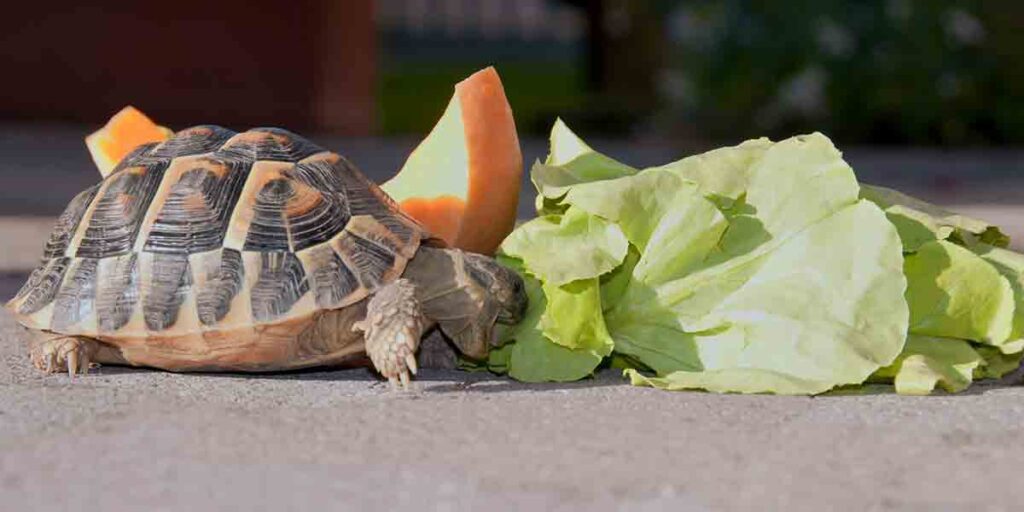
How much lettuce can I feed my turtle?
The amount of lettuce that you feed your turtle should be less than 10 percent of his body weight. Don’t feed your turtle lettuce daily, as it can lead to digestive issues.
The recommended amount of lettuce per day for a typical adult turtle is about 1/4 cup. You should also try to switch up the types of lettuce you give them, as different types contain different vitamins and minerals. In addition, you should also make sure that the lettuce is fresh and free of any blemishes or wilting.
Things to be aware of when feeding lettuce to your turtle
Many people feed their turtles lettuce, and it’s not a terrible idea, but there are a few things to be aware of when feeding lettuce to my turtle:
- All lettuce isn’t the same. Certain types of lettuce contain compounds that are toxic to turtles. Leafy greens, endive, and escarole are a few toxic types of lettuce.
- It’s important to only feed your turtle lettuce that’s grown organically. Pesticides, herbicides, and insecticides can negatively affect its health.
- Leafy greens can destroy your turtle’s digestive system. Be mindful of how much green you feed your turtle. Limit it to 2 or 3 leaves per week.
- A daily ration of frozen turtle food is perfectly fine to feed to your turtle.
- Always condition your turtle to eat new foods. Start with small bites, about 2 or 3, and gradually add more.
Conclusion
Can I feed my turtle lettuce? The answer is: Yes, but in moderation and as a part of its diet only. Because lettuce is low in calcium, it is not recommended as the only food for your turtle. You should also choose only the good types of lettuce and never overfeed your turtle.
Remember: You always need to supplement it with nutritious things like small insects, pellets, fruits, and vegetables.

